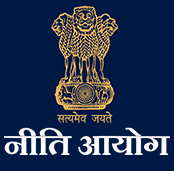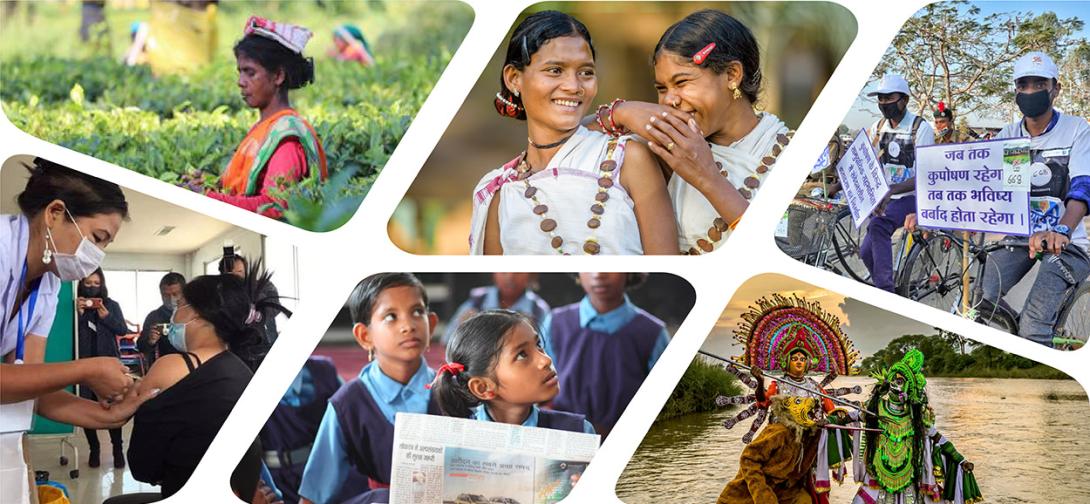Embracing Technology
Technology has increasingly shown the potential to fix challenges across important socio-economic fields such as financial inclusion and healthcare. A combination of data analytics, artificial intelligence, machine learning and a rising digital footprint in India has led to proliferation of products and services in society. As technology embraces and enhances the daily lives of people in contemporary India, people should readily return the favour, empowering themselves. Facilitating this reverse embrace of technology is essential for Indian public policy.
Financial inclusion is central to the social-security architecture in contemporary India. Pradhan Mantri Jan Dhan Yojana has led to an exponential rise in financial inclusion in India. According to World Bank’s Global Findex Report in 2014, only 53% of Indians had bank accounts; however, by 2017 this had jumped to 79.9%. FinTech is building on the success of financial inclusion, enabling a range of options for payments and transactions. For instance, BHIM and UPI have clearly raised the ease of living for people. In October 2019, these platforms had 1148 million transactions valued at Rs 1,91,359 crore. This is phenomenal, both in terms of volume and value. The next ‘fix’ would ideally be to use these platforms for increasing access to formal credit. This would ensure easier and cheaper access to credit. This is especially important since the Indian economy as of 2016 has a low bank credit to GDP ratio of 51% as against nations such as China with a comparative percentage of 98%.
Another crucial component of human development and social security is affordable, accessible and effective healthcare. The challenge of healthcare lies in the shortage of 6 lakh doctors; availability and affordability of drugs; poor, slow and incorrect diagnosis and lack of universally available healthcare with ‘60% hospitals, 75% dispensaries and 80% doctors located in urban areas servicing only 28% of the country’s population’.
Technology could be the vanguard of health. E-health technologies can create a transformational shift in Indian healthcare. E-health can ‘ensure efficiency in healthcare, thereby decreasing costs, enhancing the quality of healthcare by allowing comparisons between different providers, ensuring evidence-based treatment, enabling empowerment of patients by making the knowledge base of medicine and personal electronic records accessible and also extending the scope of healthcare beyond its conventional boundaries. E-health could enable consumers to easily obtain health services online from global providers’.
Various steps are already underway in this field. NITI Aayog’s National Health Stack and recently released report on National Digital Health Blueprint by the Ministry of Health and Family Welfare has conceptualized, amongst other things, a unique health ID containing individuals’ health records, concept of regional portability in access to healthcare, digital access to doctors and hence diagnosis, and finally a standardized service delivery for ensuring high quality care.
Hence, technological advances definitely have an immense potential to fix our developmental challenges. Public policy should facilitate the substantial use of technology wherever possible for public welfare. At the same time, it should ensure that people enthusiastically and willingly use these technology products and services, for their own well-being. For this, a principled, innovative and transparent framework should be conceptualized ensuring this reverse embrace.
The first and foremost pillar of this framework should be adherence to principles-based governance. A comprehensive technology interlaced with education, healthcare, financial sector, among others, is new for people. To ensure its sustainability and to minimize its misuse, certain first principles must be universally agreed upon. These principles may involve: Notice to individuals about information collection, Security safeguards and Accountability measures to be taken by data controller, etc. For this, the data security framework and statute under consideration in Parliament should be realized with due diligence and necessary consensus creation as soon as possible.
The second pillar of this framework lies in governance avoiding path-dependence and consequently innovating in its policies. Path-dependence implies choices being limited by decisions and experiences of the past. We shouldn’t solely rely on laws, regulations and rules that haven’t been originally conceptualized to handle novel technological interventions.
Inevitably then, public policy must develop tools to innovatively and creatively engage with new technologies. Regulators must collaborate with innovators to understand technology. Innovators must cooperate with the states to bring to their cognizance the value that technological innovations can bring for society.
The European Union has conceptualized Innovation Deals for exactly this purpose: for innovators to sign voluntary deals with regulators. If there are laws, regulations or rules that are coming in the way of bringing value to society, the innovators flag it for the government. Then a collaborative attempt is made to get over such obstacles. We should consider bringing such innovation deals in India.
Recently, a policy innovation in India aligned to this is the Consent Artifact conceptualized by the Ministry of Electronics and Information Technology. It would essentially be a digital consent form for data owners (users). The users would be able to give consent for use of their data and also the purposes for which it may be used. Furthermore, there would be an option of revoking the consent. Such policy interventions help build trust amongst people, both governance and technology. The need for such innovation is imminent. As we move towards a digital economy capable of generating economic value up to 1 trillion dollars, every step must be taken to smoothen the realization of this opportunity.
The final pillar is ensuring transparency around the use of technology. For this, there must be constant and comprehensive engagement with people. They must be involved in the consultation process before framing policies as well as the audit processes during its implementation. People must be informed about latest technologies and the form of its adoption by the state. For this, portals such as MyGov can be transformative and its popularity must be utilized optimally.
Technology is essential to address the aspiration and potential of 1.3 billion Indians. New India is witnessing technological expansion on the supply side. It is time to ensure that public policies and regulations substantially facilitate and value technology for its potential in socio-economic development. This would beneficially bring about the transformative reverse embrace of technology from the demand side.
*Satwik Mishra is a Young Professional at NITI Aayog. Views expressed are personal.
 National Portal Of India
National Portal Of India 







